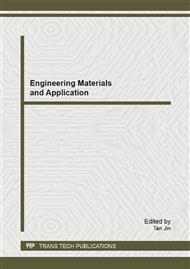p.579
p.584
p.589
p.595
p.601
p.607
p.612
p.619
p.625
A Method with a Statistical Approach for the Evaluation of Tolerance Chains
Abstract:
In this paper a procedure based on a statistical approach to manufacturing for the analysis of tolerance chains is reported. In particular, the proposed approach can be summarised into two main steps. First, each single technological operation (for example, the drilling of a hole) is simulated by extracting, from a statistical distribution typical of the machine tool, the parameters characteristic of the manufacturing procedure. Then, a simulation is performed, to verify if the real features of the part can simultaneously fit the virtual gage. This method of acceptance/rejection of a part is according to the ISO/ASME standards and is representative of the real functional requirements of the part.
Info:
Periodical:
Pages:
601-606
Citation:
Online since:
January 2013
Authors:
Keywords:
Price:
Сopyright:
© 2013 Trans Tech Publications Ltd. All Rights Reserved
Share:
Citation:


